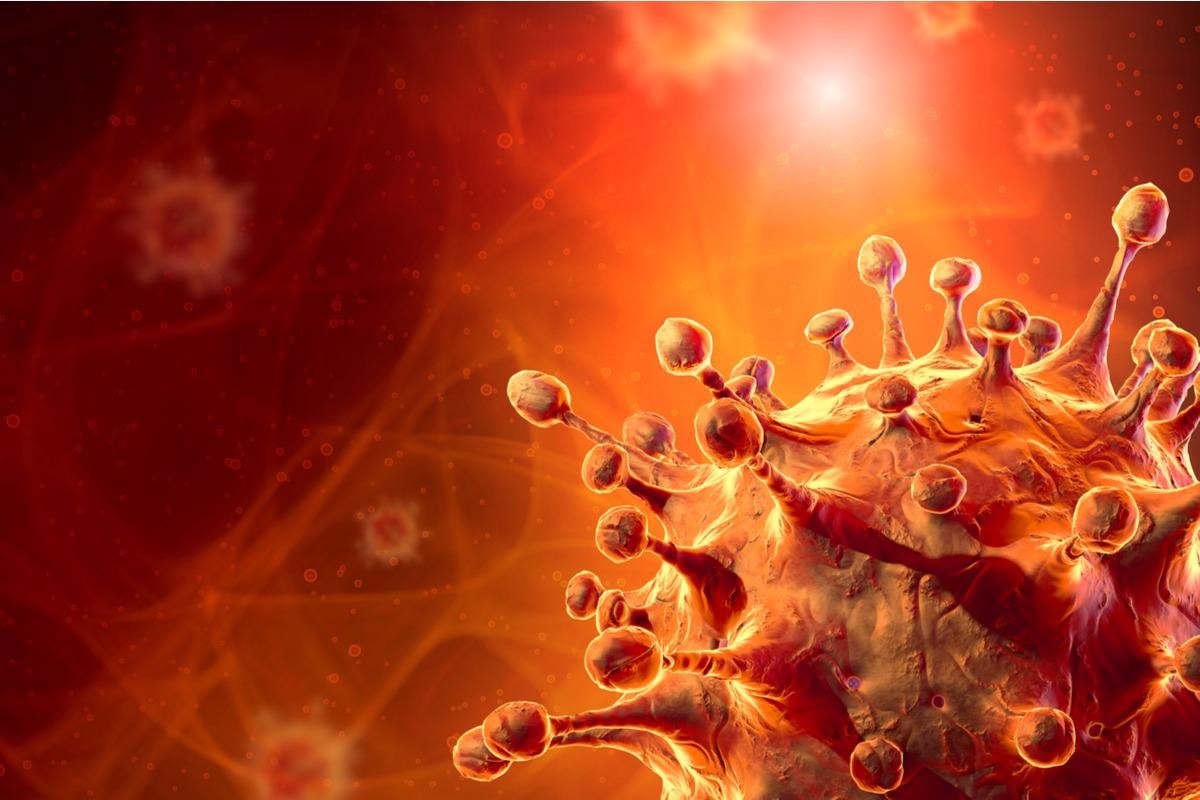A team of scientists from China has recently deciphered the structural basis of comparatively higher binding affinity of two Omicron sub-variants, namely B.1.1 and B.2, for human angiotensin-converting enzyme 2 (ACE2). The study has been published in the journal Cell.
 Study: Structural basis of human ACE2 higher binding affinity to currently circulating Omicron SARS-CoV-2 sub-variants BA.2 and BA.1.1. Image Credit: CROCOTHERY/Shutterstock
Study: Structural basis of human ACE2 higher binding affinity to currently circulating Omicron SARS-CoV-2 sub-variants BA.2 and BA.1.1. Image Credit: CROCOTHERY/Shutterstock
Background
The omicron variant of severe acute respiratory syndrome coronavirus 2 (SARS-CoV-2) is the latest identified variant of concern (VOC) with a heavily mutated spike protein. During the initial phase of the global Omicron wave, four sub-variants emerged, namely B.1, B.1.1, B.2, and B.3. Preliminary studies have shown that the B.2 sub-variant has higher replication and transmission fitness than other circulating sub-variants.
The binding of the SARS-CoV-2 spike receptor-binding domain (RBD) to human ACE2 is a crucial step for viral entry. Compared to the original Omicron variant (prototype), the sub-variants contain 14-15 mutations in their spike RBDs. It has been observed previously that both prototype Omicron and B.1 sub-variant share a similar binding affinity for human ACE2.
In the current study, the scientists have investigated the binding affinities of B.1, B.1.1, B.2, and B.3 RBDs for human ACE2. In addition, they have evaluated the structural features responsible for diverse binding affinities of omicron sub-variants.
Human ACE2 binding affinities of Omicron sub-variants
The mutational analysis revealed that B.1 and B.1.1 have 15 and 16 mutations in their spike RBDs, respectively. The extra mutation in B.1.1 RBD is R346K. Among various sub-variants of omicron, B.1.1 is globally predominating, accounting for about 26% of the total Omicron genomes.
The surface plasmon resonance method was applied to determine the binding affinities of four Omicron sub-variants (B.1, B.1.1, B.2, and B.3), the prototype variant, and four known VOCs (alpha, beta, gamma, and delta) for human ACE2.
The findings revealed that compared to the prototype variant, B.1.1 has the highest affinity for human ACE2, followed by B.2, B.1, and B.3. The binding affinities of B.1 and B.3 were almost similar. Among previously circulating VOCs, the binding affinity of only the Alpha variant was equivalent to that of the B.1.1 Omicron sub-variant.
Structural analysis of RBD-ACE2 complex
The binding interface analysis was conducted between human ACE2 and RBDs of B.1.1, B.2, and B.3 sub-variants.
The findings revealed that the absence of G496S mutation in the B.2 RBD/human ACE2 binding interface is responsible for its higher ACE2 binding affinity than B.1. Further analysis revealed that the hydroxyl side chain of S496 forms more compact intra-chain hydrogen bonds within the B.1 RBD, reducing the inter-chain interactions between RBD and ACE2. This explains why the B.1 RBD with G496S mutation has a lower ACE2 binding affinity than the B.2 RBD, which lacks this mutation.
The presence of R346K mutation in the B.1.1 RBD was responsible for its higher ACE2 binding affinity than B.1. Further analysis revealed that the R346K mutation severely affects the amino acid-amino acid interaction network at the RBD-ACE2 binding interface through long-distance alterations. These changes are responsible for the increased binding affinity of B.1.1 for human ACE2.
Study significance
The study compares human ACE2 binding affinities of different Omicron sub-variants and explains the structural basis of these variations. Specifically, the study highlights the significance of G496S and R346K RBD mutations in increasing ACE2 binding affinities of the B.2 and B.1.1 sub-variants, respectively, as compared to the B.1 sub-variant.
Several novel sub-variants of SARS-CoV-2 Omicron have been identified globally, including BA.2.12.1, B.4, and B.5. Of these sub-variants, BA.2.12.1 is rapidly spreading in the Northeast United States, and B.4 and B.5 are spreading dominantly in South Africa.
The study explains that despite being located outside of the spike receptor-binding motif, the R346K mutation can increase the binding affinity by altering interaction networks at the RBD-ACE2 interface via long-distance “conduction” interactions.